How the red deer brought the Wild West to New Zealand
New Zealand is a magical place, with stunning natural beauty and amazing scenery. From national parks, golden beaches, indigenous forests to expansive mountain ranges that stretch on endlessly, the opportunities to explore abound. The cities and towns too hold their own charm; some surreally modern while others hold an old-world charm that harks to a previous era. One thing that is guaranteed, for a small county there is much to explore.
 And more than just a tourist destination there is also a massive export industry for amazing New Zealand produce, including wine, honey, butter, cheese and venison to name but a few. New Zealand produce offers exceptional quality, given the drive towards sustainability and environmental awareness.
But one export with a history of crazy wild-west style antics may surprise readers, and that is the tale of the red deer. How a small introduced population back in the late 1800’s has led to an internationally recognised venison industry is not only strange, but it’s true.
And more than just a tourist destination there is also a massive export industry for amazing New Zealand produce, including wine, honey, butter, cheese and venison to name but a few. New Zealand produce offers exceptional quality, given the drive towards sustainability and environmental awareness.
But one export with a history of crazy wild-west style antics may surprise readers, and that is the tale of the red deer. How a small introduced population back in the late 1800’s has led to an internationally recognised venison industry is not only strange, but it’s true.
 A well-meant gift from the President
Although New Zealand is known for its delicious lamb, that is by no means the only red meat-source we produce. A thriving venison industry has grown over the last decade. Because venison is recognised as extremely healthy meat, being very low in fat, high in protein, iron, zinc and Vitamin B12 there has been an increase in demand over the last few years.
The story around how this industry came about is definitely worth exploring and goes back to the late 19th century when the red deer were first brought to New Zealand. The introduction of the red deer, which has been the most successful of the introduced deer, came predominantly from the United Kingdom and are still the most common deer in the wild here.
A well-meant gift from the President
Although New Zealand is known for its delicious lamb, that is by no means the only red meat-source we produce. A thriving venison industry has grown over the last decade. Because venison is recognised as extremely healthy meat, being very low in fat, high in protein, iron, zinc and Vitamin B12 there has been an increase in demand over the last few years.
The story around how this industry came about is definitely worth exploring and goes back to the late 19th century when the red deer were first brought to New Zealand. The introduction of the red deer, which has been the most successful of the introduced deer, came predominantly from the United Kingdom and are still the most common deer in the wild here.
 Along with the red deer though, other species were also introduced. Fallow deer from the Middle East, sanbar, sika and rusa from Asia and white-tailed deer from North America, all of which are still to be found in New Zealand. The wapiti from Yellowstone National Park, a gift from President Roosevelt, were released into Fiordland, on the South Island; but they are found in much smaller numbers now.
Without natural predators and with loads of sweet grazing the deer populations in New Zealand grew and spread. Herds of wild deer damaged native forests and plantations, creating widespread concern.
Along with the red deer though, other species were also introduced. Fallow deer from the Middle East, sanbar, sika and rusa from Asia and white-tailed deer from North America, all of which are still to be found in New Zealand. The wapiti from Yellowstone National Park, a gift from President Roosevelt, were released into Fiordland, on the South Island; but they are found in much smaller numbers now.
Without natural predators and with loads of sweet grazing the deer populations in New Zealand grew and spread. Herds of wild deer damaged native forests and plantations, creating widespread concern.
 Adventure and the cowboys of New Zealand
From around the 1920s, the Department of internal affairs was responsible for controlling what was evidently becoming an environmental challenge. A task team of cullers was hired by the government to control the wild deer. Their focus was on mitigating the damage that deer wrought on the forests and surrounding vegetation.
But with populations still out of control by the 1960s, deer farming was managed under the guidance of the New Zealand Forest Service. Many former government deer-cullers saw the potential to cash in on this initiative. And suddenly a decade of adventurous risk-taking, and life-threatening exploits unfolded. The early 1970s saw many men and their teams buying helicopters, learning how to fly and then swooping into forested areas. Apparently, around 60 helicopters were flying into remote areas to shoot and recover deer.
When the price per kilo increased to around $2 the action escalated, with helicopter crews making illegal raids it was more like the wild-west. Stories of arson, sabotage, punch-ups and shootings at helicopters making headlines. This finally settled down after the government sent in the air-force to resolve the ‘deer’ wars’.
Adventure and the cowboys of New Zealand
From around the 1920s, the Department of internal affairs was responsible for controlling what was evidently becoming an environmental challenge. A task team of cullers was hired by the government to control the wild deer. Their focus was on mitigating the damage that deer wrought on the forests and surrounding vegetation.
But with populations still out of control by the 1960s, deer farming was managed under the guidance of the New Zealand Forest Service. Many former government deer-cullers saw the potential to cash in on this initiative. And suddenly a decade of adventurous risk-taking, and life-threatening exploits unfolded. The early 1970s saw many men and their teams buying helicopters, learning how to fly and then swooping into forested areas. Apparently, around 60 helicopters were flying into remote areas to shoot and recover deer.
When the price per kilo increased to around $2 the action escalated, with helicopter crews making illegal raids it was more like the wild-west. Stories of arson, sabotage, punch-ups and shootings at helicopters making headlines. This finally settled down after the government sent in the air-force to resolve the ‘deer’ wars’.
 Jumping from helicopters
Amid much opposition, deer farming was legalised in ’69, but this too was risky business as it entailed live deer being caught and transported. Initially, strapping young men were employed to jump out of a helicopter onto a running deer, tussle with the animal until it could be tied and restrained before being tucked into a bag and airlifted out. The risks involved with this method were pretty obvious and fortunately evolved into a safer catch and haul method with the introduction of the dart gun.
Thank goodness this all settled into a more sedate farming style where codes of conduct that outlined best practices were quickly established. By 2005 more than 1.7 million deer were being farmed in New Zealand, compared with 5 million dairy cows, almost 40 million sheep, and 4.4 million beef cattle.
New Zealand features on the world stage when it comes to deer farming now, both in technology and contribution to the economy. Deer yards, whether for a large or small farm must be designed to minimise stress on the animals which are naturally skittish. Farmers are expected to follow a code of welfare which covers a minimum body condition score, daily food, and water, standard for the yard as well as seasonal management.
The deer primarily graze on ryegrass and clover pastures, and supplementary feed in winter. No hormones or growth stimulants are used so the assurance that New Zealand venison is the purest quality is substantiated.
Jumping from helicopters
Amid much opposition, deer farming was legalised in ’69, but this too was risky business as it entailed live deer being caught and transported. Initially, strapping young men were employed to jump out of a helicopter onto a running deer, tussle with the animal until it could be tied and restrained before being tucked into a bag and airlifted out. The risks involved with this method were pretty obvious and fortunately evolved into a safer catch and haul method with the introduction of the dart gun.
Thank goodness this all settled into a more sedate farming style where codes of conduct that outlined best practices were quickly established. By 2005 more than 1.7 million deer were being farmed in New Zealand, compared with 5 million dairy cows, almost 40 million sheep, and 4.4 million beef cattle.
New Zealand features on the world stage when it comes to deer farming now, both in technology and contribution to the economy. Deer yards, whether for a large or small farm must be designed to minimise stress on the animals which are naturally skittish. Farmers are expected to follow a code of welfare which covers a minimum body condition score, daily food, and water, standard for the yard as well as seasonal management.
The deer primarily graze on ryegrass and clover pastures, and supplementary feed in winter. No hormones or growth stimulants are used so the assurance that New Zealand venison is the purest quality is substantiated.
 Rey grass and clover
Thank goodness this all settled into a more sedate farming style where codes of conduct that outlined best practices were quickly established. By 2005 more than 1.7 million deer were being farmed in New Zealand, compared with 5 million dairy cows, almost 40 million sheep and 4.4 million beef cattle.
New Zealand features on the world stage when it comes to deer farming now, both in technology and contribution to the economy. Deer yards, whether for a large or small farm must be designed to minimise stress on the animals which are naturally skittish. Farmers are expected to follow a code of welfare which covers a minimum body condition score, daily food, and water, standard for the yard as well as seasonal management.
The deer primarily graze on ryegrass and clover pastures, and supplementary feed in winter. No hormones or growth stimulants are used so the assurance that New Zealand venison is the purest quality is substantiated.
The call of the wild
Red deer are the most widespread species in New Zealand, with populations flourishing. From the Kaimai Range in the North Island to Stewart Island in the South, you can find an opportunity to view these majestic creatures, either on a game drive or at a selection of lodges and parks.
Be warned, if you are in an area with a deer population, you may hear the eerie roar that a stag vocalises to establish his territory and impress the fairer sex. The sound carries far and wide and is meant only for members of his own species, given how shy they are. But those who have heard the call claim it’s strange and very unsettling!
These days the deer industry has something for everyone, from sustainable hunting to masterfully crafted meat products and cured salamis. Considering that this was an introduced species, New Zealand has done well to manage the initial environmental issues and create a sustainably managed industry.
Veronika Vermeulen is Director of Aroha New Zealand Tours Ltd. Aroha New Zealand Tours Ltd. has been offering 100% tailored journeys and private guided luxury experiences in New Zealand since 2000.
If you would like to be a guest blogger on A Luxury Travel Blog in order to raise your profile, please contact us.
Rey grass and clover
Thank goodness this all settled into a more sedate farming style where codes of conduct that outlined best practices were quickly established. By 2005 more than 1.7 million deer were being farmed in New Zealand, compared with 5 million dairy cows, almost 40 million sheep and 4.4 million beef cattle.
New Zealand features on the world stage when it comes to deer farming now, both in technology and contribution to the economy. Deer yards, whether for a large or small farm must be designed to minimise stress on the animals which are naturally skittish. Farmers are expected to follow a code of welfare which covers a minimum body condition score, daily food, and water, standard for the yard as well as seasonal management.
The deer primarily graze on ryegrass and clover pastures, and supplementary feed in winter. No hormones or growth stimulants are used so the assurance that New Zealand venison is the purest quality is substantiated.
The call of the wild
Red deer are the most widespread species in New Zealand, with populations flourishing. From the Kaimai Range in the North Island to Stewart Island in the South, you can find an opportunity to view these majestic creatures, either on a game drive or at a selection of lodges and parks.
Be warned, if you are in an area with a deer population, you may hear the eerie roar that a stag vocalises to establish his territory and impress the fairer sex. The sound carries far and wide and is meant only for members of his own species, given how shy they are. But those who have heard the call claim it’s strange and very unsettling!
These days the deer industry has something for everyone, from sustainable hunting to masterfully crafted meat products and cured salamis. Considering that this was an introduced species, New Zealand has done well to manage the initial environmental issues and create a sustainably managed industry.
Veronika Vermeulen is Director of Aroha New Zealand Tours Ltd. Aroha New Zealand Tours Ltd. has been offering 100% tailored journeys and private guided luxury experiences in New Zealand since 2000.
If you would like to be a guest blogger on A Luxury Travel Blog in order to raise your profile, please contact us.
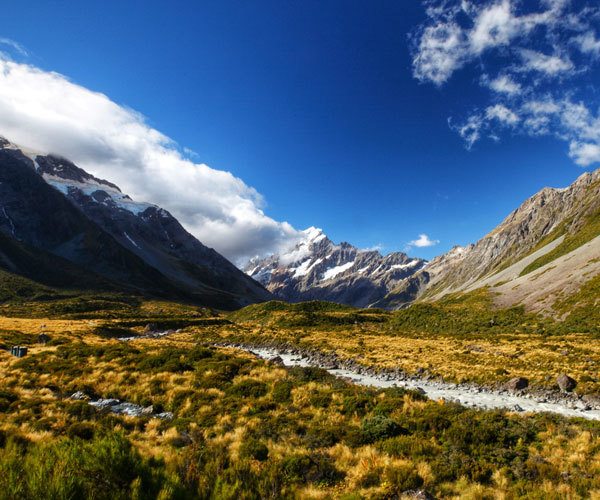 And more than just a tourist destination there is also a massive export industry for amazing New Zealand produce, including wine, honey, butter, cheese and venison to name but a few. New Zealand produce offers exceptional quality, given the drive towards sustainability and environmental awareness.
But one export with a history of crazy wild-west style antics may surprise readers, and that is the tale of the red deer. How a small introduced population back in the late 1800’s has led to an internationally recognised venison industry is not only strange, but it’s true.
And more than just a tourist destination there is also a massive export industry for amazing New Zealand produce, including wine, honey, butter, cheese and venison to name but a few. New Zealand produce offers exceptional quality, given the drive towards sustainability and environmental awareness.
But one export with a history of crazy wild-west style antics may surprise readers, and that is the tale of the red deer. How a small introduced population back in the late 1800’s has led to an internationally recognised venison industry is not only strange, but it’s true.
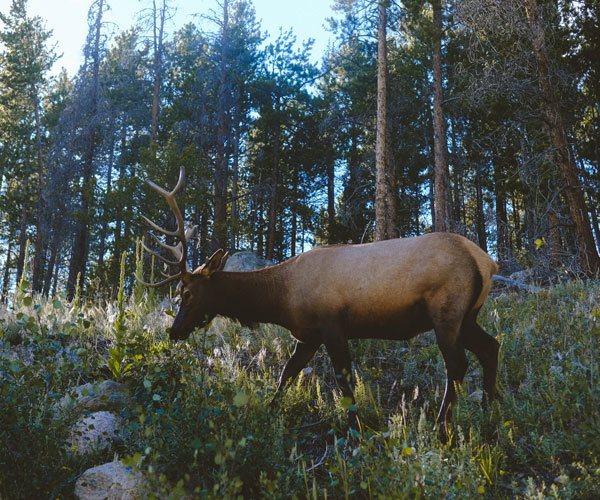 A well-meant gift from the President
Although New Zealand is known for its delicious lamb, that is by no means the only red meat-source we produce. A thriving venison industry has grown over the last decade. Because venison is recognised as extremely healthy meat, being very low in fat, high in protein, iron, zinc and Vitamin B12 there has been an increase in demand over the last few years.
The story around how this industry came about is definitely worth exploring and goes back to the late 19th century when the red deer were first brought to New Zealand. The introduction of the red deer, which has been the most successful of the introduced deer, came predominantly from the United Kingdom and are still the most common deer in the wild here.
A well-meant gift from the President
Although New Zealand is known for its delicious lamb, that is by no means the only red meat-source we produce. A thriving venison industry has grown over the last decade. Because venison is recognised as extremely healthy meat, being very low in fat, high in protein, iron, zinc and Vitamin B12 there has been an increase in demand over the last few years.
The story around how this industry came about is definitely worth exploring and goes back to the late 19th century when the red deer were first brought to New Zealand. The introduction of the red deer, which has been the most successful of the introduced deer, came predominantly from the United Kingdom and are still the most common deer in the wild here.
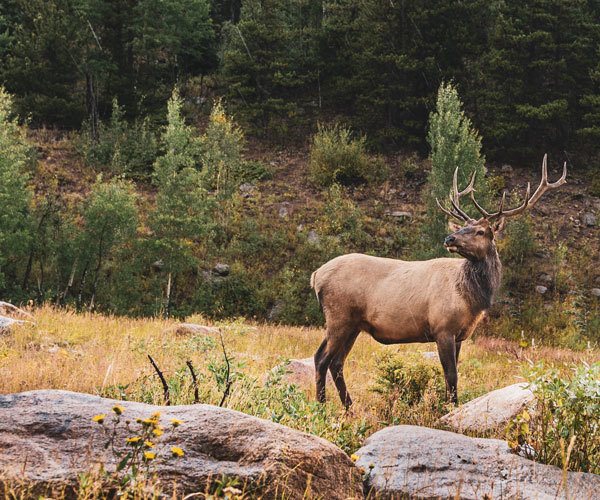 Along with the red deer though, other species were also introduced. Fallow deer from the Middle East, sanbar, sika and rusa from Asia and white-tailed deer from North America, all of which are still to be found in New Zealand. The wapiti from Yellowstone National Park, a gift from President Roosevelt, were released into Fiordland, on the South Island; but they are found in much smaller numbers now.
Without natural predators and with loads of sweet grazing the deer populations in New Zealand grew and spread. Herds of wild deer damaged native forests and plantations, creating widespread concern.
Along with the red deer though, other species were also introduced. Fallow deer from the Middle East, sanbar, sika and rusa from Asia and white-tailed deer from North America, all of which are still to be found in New Zealand. The wapiti from Yellowstone National Park, a gift from President Roosevelt, were released into Fiordland, on the South Island; but they are found in much smaller numbers now.
Without natural predators and with loads of sweet grazing the deer populations in New Zealand grew and spread. Herds of wild deer damaged native forests and plantations, creating widespread concern.
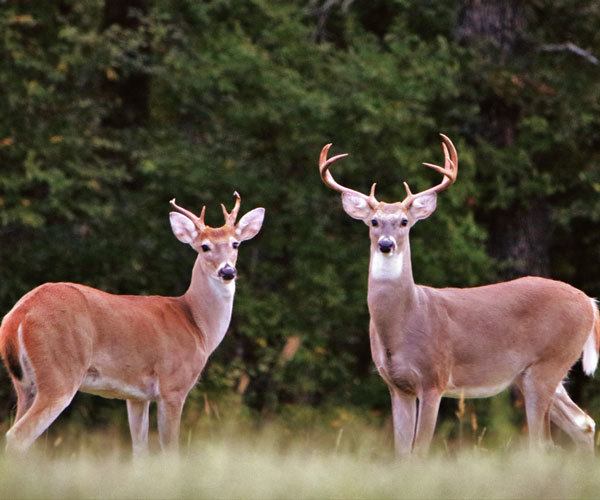 Adventure and the cowboys of New Zealand
From around the 1920s, the Department of internal affairs was responsible for controlling what was evidently becoming an environmental challenge. A task team of cullers was hired by the government to control the wild deer. Their focus was on mitigating the damage that deer wrought on the forests and surrounding vegetation.
But with populations still out of control by the 1960s, deer farming was managed under the guidance of the New Zealand Forest Service. Many former government deer-cullers saw the potential to cash in on this initiative. And suddenly a decade of adventurous risk-taking, and life-threatening exploits unfolded. The early 1970s saw many men and their teams buying helicopters, learning how to fly and then swooping into forested areas. Apparently, around 60 helicopters were flying into remote areas to shoot and recover deer.
When the price per kilo increased to around $2 the action escalated, with helicopter crews making illegal raids it was more like the wild-west. Stories of arson, sabotage, punch-ups and shootings at helicopters making headlines. This finally settled down after the government sent in the air-force to resolve the ‘deer’ wars’.
Adventure and the cowboys of New Zealand
From around the 1920s, the Department of internal affairs was responsible for controlling what was evidently becoming an environmental challenge. A task team of cullers was hired by the government to control the wild deer. Their focus was on mitigating the damage that deer wrought on the forests and surrounding vegetation.
But with populations still out of control by the 1960s, deer farming was managed under the guidance of the New Zealand Forest Service. Many former government deer-cullers saw the potential to cash in on this initiative. And suddenly a decade of adventurous risk-taking, and life-threatening exploits unfolded. The early 1970s saw many men and their teams buying helicopters, learning how to fly and then swooping into forested areas. Apparently, around 60 helicopters were flying into remote areas to shoot and recover deer.
When the price per kilo increased to around $2 the action escalated, with helicopter crews making illegal raids it was more like the wild-west. Stories of arson, sabotage, punch-ups and shootings at helicopters making headlines. This finally settled down after the government sent in the air-force to resolve the ‘deer’ wars’.
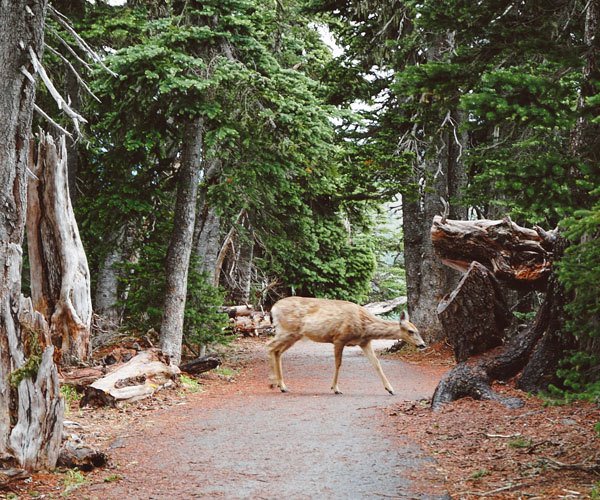 Jumping from helicopters
Amid much opposition, deer farming was legalised in ’69, but this too was risky business as it entailed live deer being caught and transported. Initially, strapping young men were employed to jump out of a helicopter onto a running deer, tussle with the animal until it could be tied and restrained before being tucked into a bag and airlifted out. The risks involved with this method were pretty obvious and fortunately evolved into a safer catch and haul method with the introduction of the dart gun.
Thank goodness this all settled into a more sedate farming style where codes of conduct that outlined best practices were quickly established. By 2005 more than 1.7 million deer were being farmed in New Zealand, compared with 5 million dairy cows, almost 40 million sheep, and 4.4 million beef cattle.
New Zealand features on the world stage when it comes to deer farming now, both in technology and contribution to the economy. Deer yards, whether for a large or small farm must be designed to minimise stress on the animals which are naturally skittish. Farmers are expected to follow a code of welfare which covers a minimum body condition score, daily food, and water, standard for the yard as well as seasonal management.
The deer primarily graze on ryegrass and clover pastures, and supplementary feed in winter. No hormones or growth stimulants are used so the assurance that New Zealand venison is the purest quality is substantiated.
Jumping from helicopters
Amid much opposition, deer farming was legalised in ’69, but this too was risky business as it entailed live deer being caught and transported. Initially, strapping young men were employed to jump out of a helicopter onto a running deer, tussle with the animal until it could be tied and restrained before being tucked into a bag and airlifted out. The risks involved with this method were pretty obvious and fortunately evolved into a safer catch and haul method with the introduction of the dart gun.
Thank goodness this all settled into a more sedate farming style where codes of conduct that outlined best practices were quickly established. By 2005 more than 1.7 million deer were being farmed in New Zealand, compared with 5 million dairy cows, almost 40 million sheep, and 4.4 million beef cattle.
New Zealand features on the world stage when it comes to deer farming now, both in technology and contribution to the economy. Deer yards, whether for a large or small farm must be designed to minimise stress on the animals which are naturally skittish. Farmers are expected to follow a code of welfare which covers a minimum body condition score, daily food, and water, standard for the yard as well as seasonal management.
The deer primarily graze on ryegrass and clover pastures, and supplementary feed in winter. No hormones or growth stimulants are used so the assurance that New Zealand venison is the purest quality is substantiated.
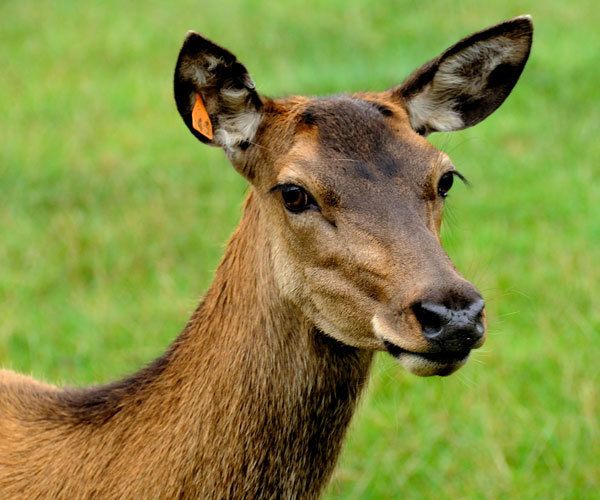 Rey grass and clover
Thank goodness this all settled into a more sedate farming style where codes of conduct that outlined best practices were quickly established. By 2005 more than 1.7 million deer were being farmed in New Zealand, compared with 5 million dairy cows, almost 40 million sheep and 4.4 million beef cattle.
New Zealand features on the world stage when it comes to deer farming now, both in technology and contribution to the economy. Deer yards, whether for a large or small farm must be designed to minimise stress on the animals which are naturally skittish. Farmers are expected to follow a code of welfare which covers a minimum body condition score, daily food, and water, standard for the yard as well as seasonal management.
The deer primarily graze on ryegrass and clover pastures, and supplementary feed in winter. No hormones or growth stimulants are used so the assurance that New Zealand venison is the purest quality is substantiated.
The call of the wild
Red deer are the most widespread species in New Zealand, with populations flourishing. From the Kaimai Range in the North Island to Stewart Island in the South, you can find an opportunity to view these majestic creatures, either on a game drive or at a selection of lodges and parks.
Be warned, if you are in an area with a deer population, you may hear the eerie roar that a stag vocalises to establish his territory and impress the fairer sex. The sound carries far and wide and is meant only for members of his own species, given how shy they are. But those who have heard the call claim it’s strange and very unsettling!
These days the deer industry has something for everyone, from sustainable hunting to masterfully crafted meat products and cured salamis. Considering that this was an introduced species, New Zealand has done well to manage the initial environmental issues and create a sustainably managed industry.
Veronika Vermeulen is Director of Aroha New Zealand Tours Ltd. Aroha New Zealand Tours Ltd. has been offering 100% tailored journeys and private guided luxury experiences in New Zealand since 2000.
If you would like to be a guest blogger on A Luxury Travel Blog in order to raise your profile, please contact us.
Rey grass and clover
Thank goodness this all settled into a more sedate farming style where codes of conduct that outlined best practices were quickly established. By 2005 more than 1.7 million deer were being farmed in New Zealand, compared with 5 million dairy cows, almost 40 million sheep and 4.4 million beef cattle.
New Zealand features on the world stage when it comes to deer farming now, both in technology and contribution to the economy. Deer yards, whether for a large or small farm must be designed to minimise stress on the animals which are naturally skittish. Farmers are expected to follow a code of welfare which covers a minimum body condition score, daily food, and water, standard for the yard as well as seasonal management.
The deer primarily graze on ryegrass and clover pastures, and supplementary feed in winter. No hormones or growth stimulants are used so the assurance that New Zealand venison is the purest quality is substantiated.
The call of the wild
Red deer are the most widespread species in New Zealand, with populations flourishing. From the Kaimai Range in the North Island to Stewart Island in the South, you can find an opportunity to view these majestic creatures, either on a game drive or at a selection of lodges and parks.
Be warned, if you are in an area with a deer population, you may hear the eerie roar that a stag vocalises to establish his territory and impress the fairer sex. The sound carries far and wide and is meant only for members of his own species, given how shy they are. But those who have heard the call claim it’s strange and very unsettling!
These days the deer industry has something for everyone, from sustainable hunting to masterfully crafted meat products and cured salamis. Considering that this was an introduced species, New Zealand has done well to manage the initial environmental issues and create a sustainably managed industry.
Veronika Vermeulen is Director of Aroha New Zealand Tours Ltd. Aroha New Zealand Tours Ltd. has been offering 100% tailored journeys and private guided luxury experiences in New Zealand since 2000.
If you would like to be a guest blogger on A Luxury Travel Blog in order to raise your profile, please contact us.Did you enjoy this article?
Receive similar content direct to your inbox.



Frequently, there’s an interesting story behind the introduction of a species to a country.
I remember a guide in Australia telling a story. A very successful immigrant from Britain built himself a house in the style of a country house back home. He also had a wonderful lawn but something was missing. There was nothing to shoot at on a warm summer’s evening.
Consequently, he ordered a few dozen rabbits to be shipped over from the mother country.
The rabbits breed faster than he could shoot them and that is how rabbits were introduced to Australia.
Even if this isn’t a true story please don’t tell me.
I bet Red Deer to New Zealand are not the only strange gift from one nation to another. Any other strange gifts that A Luxury Travel Bloggers know off? There must be plenty of other bizarre international gifts.
Well, we know in New Zealand it did not work out always that good. We were also introduced to the Australian possums for the fur trade, but these animals are now one of our biggest pests.
That’s why a lot of countries have very strict rules on bringing fresh farm produce and wild stock without going through the proper channels and inspection. Indigenous flora and fauna can become prey or die when introduced to a natural predator. People are more informed now and would think twice about introducing anything harmful to a place they are visiting. At least that’s what I hope travelers are thinking.
Yes, we all hope we won’t repeat mistakes like this, but watching our border controls, unfortunately, some humans don’t seem to understand or learn from the past.
Wow, they really look red! Amazing. I’ve never seen such color on a deer before. It made me search for unusually colored mammals and I see there’s some very colorful species of monkeys as well as squirrels. Fascinating. I’ve heard about the stag calls before sounding like cows so sometimes they’re mistaken for cows.
Hi Tricia,
yes, the stags in the roar can sound like cows to attract their Hines. The roar here in New Zealand is around the end of March. It is beautiful to watch them late in the evening when they come out of the bush line! In my personal case living on a dairy farm surrounded by forestry, we see and hear then often. Regards Veronika